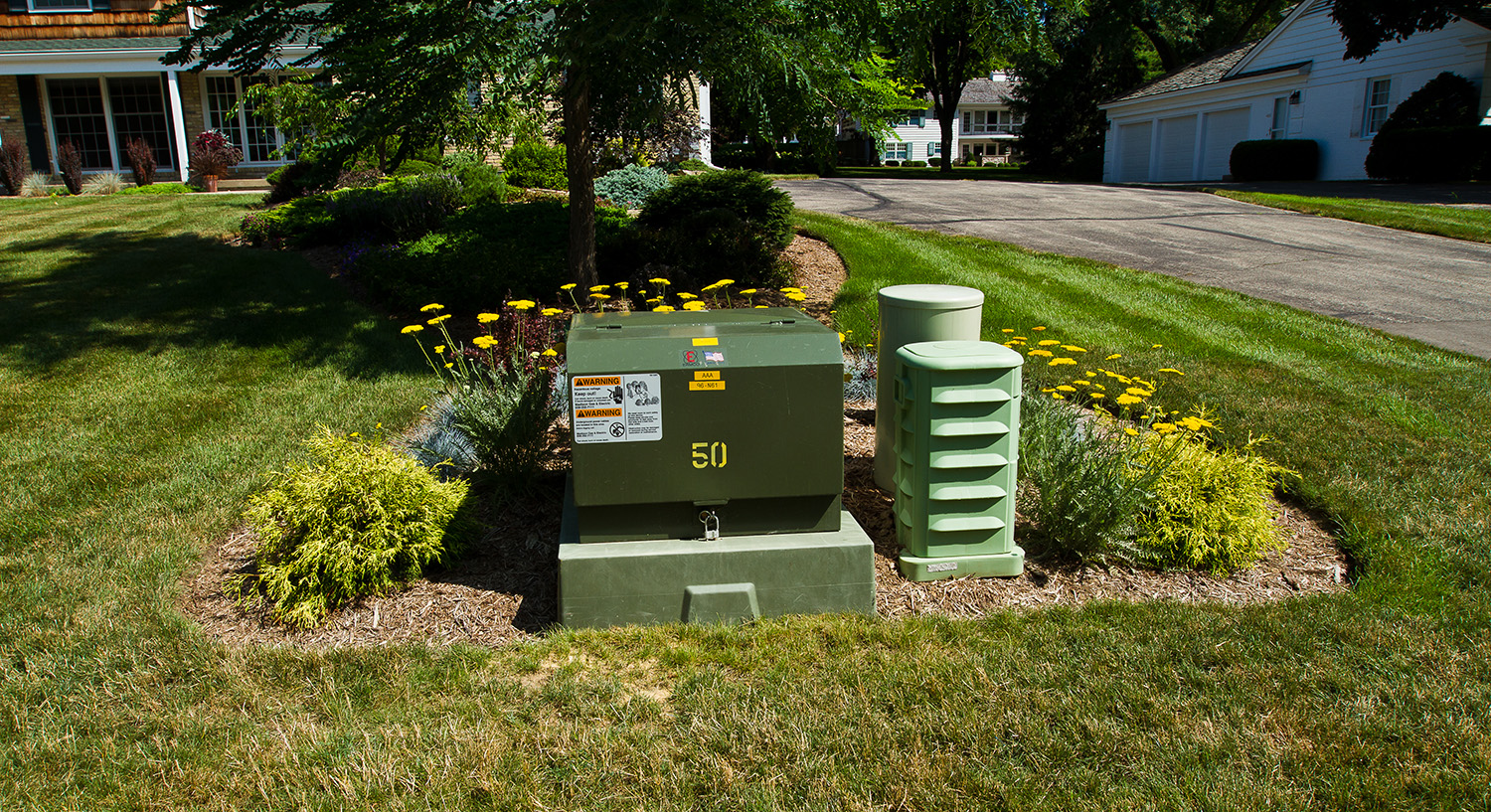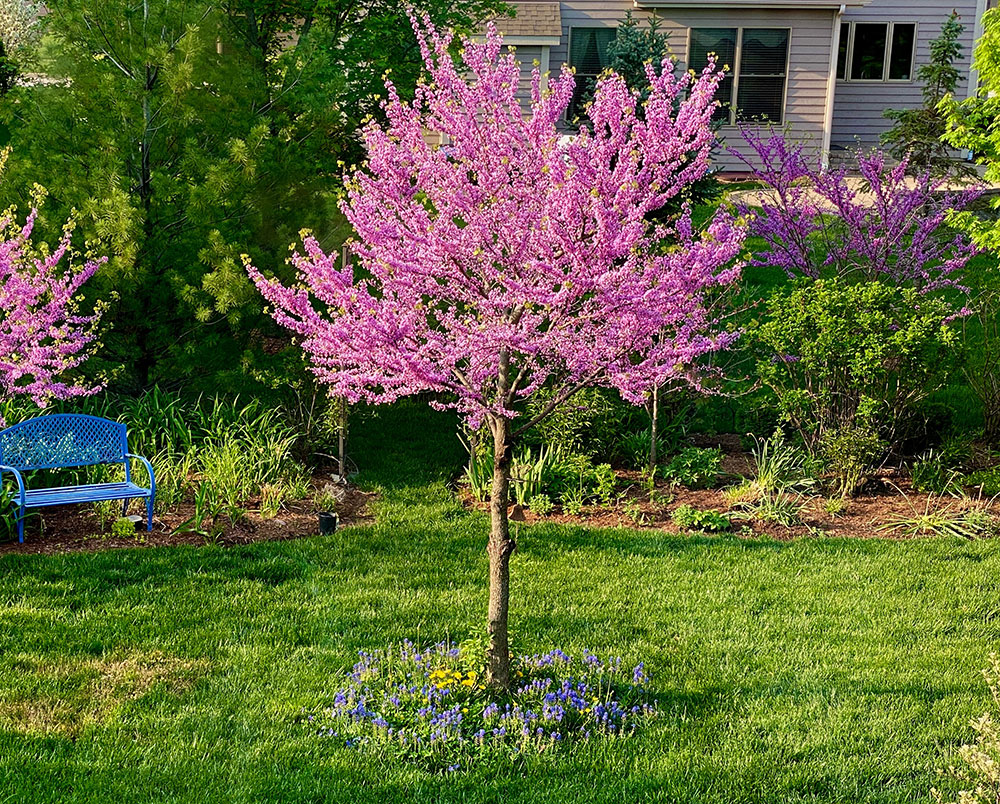
Trees and Landscaping
Storms and wind can cause trees to fall or branches to bend or break into electrical wires. Since trees are a potential conductor of electricity, trees that are touching power lines could cause an electrical outage, fire or electrocution.
If you see trees or branches that are touching power lines, please report the situation to MGE by calling 608-252-7000. Do not attempt to remove the tree branch or limbs close to power lines on your own.
Tree pruning

To maintain safe and reliable service, MGE ISA certified arborists work with a contractor to prune trees and remove saplings that are close to, or may grow into, our electric lines. In general, we follow these guidelines:
- Trees are pruned every four to five growing seasons.
- Each tree is assessed individually for the amount of pruning needed to make safe clearance from the lines. The species, location and wire type are all taken into account and can affect the amount of pruning.
- Electric service lines (pole to house wires) will be checked for tree conflicts at the same time; only small branches making hard contact or deflecting the wire path will be pruned.
- We follow International Society of Arboriculture, American National A300 Pruning Standards. Our ISA certified arborists are looking for signs of disease, such as Emerald Ash Borer, while we are working in local neighborhoods to ensure we aren't spreading invasive pests or potential disease to other areas.
- Oak trees are pruned in the dormant season, generally between November 1 and April 1, when there is little danger of oak wilt infection.
Notification and pruning process
When an area is due for pruning, residents with overhead electric lines will receive an MGE postcard or door hanger to notify them that an arborist will be in the neighborhood soon.
MGE arborists will assess all the lines in that area for pruning and/or sapling removal. If your property or trees need pruning or if you have saplings to be removed, the arborist will hang a door card to notify you of the intended work. If we must remove a tree, we will ask for your permission.
We will haul away and chip brush and woody debris; if large branches are pruned, the wood is left on-site for your use as firewood. An arborist will discuss any possible firewood with you prior to pruning.
If you have a tree you would like removed that is near MGE lines, we recommend contacting a residential tree services contractor first.
When storms or other emergencies cause damage, MGE will clear broken, uprooted or otherwise damaged trees and branches from our facilities to make the situation safe for restoration of your electric service. We do not make finishing pruning cuts on broken branches we have removed. Some situations may require disconnection of the wire and a temporary loss of power for the work to be done quickly and safely.
Our goal is to restore power as quickly and safely as possible; oftentimes, power cannot be restored until broken or damaged trees are removed from our facilities. Since restoring power is our main priority, we are unable to move, remove or chip brush or wood related to storm or emergency tree pruning.
Planting and landscaping
Always call Diggers Hotline (811) before you begin your planting project.
Power lines and tree limbs do not mix. To avoid the sometimes-dramatic pruning that we need to do to keep people and power lines safe, please plant trees that will not grow to interfere with overhead electric lines or underground utilities.
Ten best trees to plant near power lines
Consult your local nursery to determine an appropriate choice for your landscape, and ensure you're providing proper care for your new tree. Also be sure to ask for disease-resistant varieties and cultivars.

- Serviceberry (Amelanchier spp.)
- Eastern Redbud (Cercis canadensis)
- Japanese Tree Lilac (Syringia reticulata)
- American Hornbeam/Musclewood (Carpinus caroliniana)
- Dwarf Magnolia Hybrids (Magnolia 'Little Girl' Series)
- Korean Maple (Acer pseudosieboldianum)
- Cornelian Cherry Dogwood (Cornus mas)
- Flowering Crabapple (Malus spp.)
- Pagoda Dogwood (Cornus alternifolia)
- Fringetree (Chionanthus virginicus)
Transformers
To improve the aesthetics of our neighborhoods, we install new electric services underground. While it eliminates the tall poles and lines going overhead, it does require pad-mounted transformers in backyards.
Many homeowners don't consider electric transformers beautiful lawn ornaments, and we can appreciate wanting to screen them from view. Unfortunately, some customers create a hazardous situation by their landscaping choices.

Allow 10 feet of clear space in front of transformers. At least once a year, our service workers open and work on the transformers while they are energized so you and your neighbors don't have to sit in the dark. To safely do that, they use an 8-foot fiberglass "hot stick" which needs about 10 feet of clear space in front of the transformer.

Allow 3 feet of space on sides and behind transformers. Pad-mounted transformers can overheat and cause a service interruption if they do not have enough air circulation around them. Occasionally, transformers may require extensive repairs and eventually transformers must be upgraded and replaced. In those cases, we drive a vehicle into the right-of-way and use a boom to lift and transport them because they are very heavy. Please understand that we may not be able to avoid damaging your plantings. Plantings in front of electric cabinets need to be perennials, ornamental grasses or annuals only.
Restoration
Sometimes, MGE will need to access our underground electric and natural gas systems for maintenance purposes. If this work occurs on your property, MGE or our contract crews will restore the area by covering the trench and reseeding with a grass seed mix.
To ensure that the area is successfully restored, please follow the below suggestions:
- Keep the seeds moist. Water daily when conditions are hot and dry. Just wet the upper 1/2 inch to 1 inch of soil.
- After four weeks, reduce the frequency of watering but increase its duration to moisten several inches into the soil. This encourages deeper roots for a more drought-tolerant lawn.
- Maintain at 2½ inches to 3 inches height. Taller lawns are more heat and drought resistant.
- Don't fertilize or use herbicides until after you have mowed five or six times.
- Use only slow-release fertilizer to avoid burning the new, tender grass.
- Avoid heavy traffic on newly seeded areas for the first growing season.
Note: Newly seeded areas will have more weeds than your existing turf. Dormant weed seeds will sprout naturally in the soil. In time, the new grass will thicken and compete favorably with the weeds. Once the new grass is established, use herbicides or other more natural methods to control weeds. It will take two full growing seasons for your new lawn to fill in and blend with your existing turf.
If you have questions about your lawn restoration, call MGE at 608-252-7000. While we can't avoid causing disturbances to your lawn, we do want to help restore it to your satisfaction. We appreciate your patience and cooperation with our crews during the utility work.
Burying Your Service
Learn about the process and costs to convert your electric service from overhead to underground.
Get informedCall Before You Dig
Contact Diggers Hotline at least three business days before you start planting.
Dig safe
